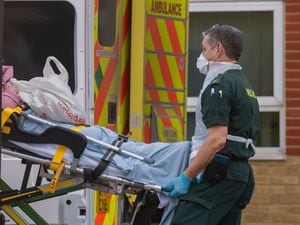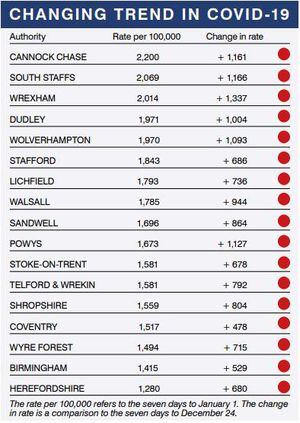Omicron tightens its grip on region as wave grows
Omicron has its grip on the West Midlands, with significant increases in infection in all areas.

The region is experiencing similar levels to that seen in London, the first area to be hit by the new variant.
The capital is now seeing falling levels in some areas, leading to hopes that it has passed the peak. It is hoped that the West Midlands will stabilise in the next couple of weeks before also seeing infection levels fall.
Up to one in 15 people in the West Midlands have suffered from Covid in the last week.

The figures, for the seven days to January 1, are based on the number of people who have tested positive for Covid-19 in a lab-reported test, plus, in England, positive rapid lateral flow tests that do not have a negative confirmatory lab-based PCR test within 72 hours. The rate is expressed as the number of new cases per 100,000 people.
Of the 377 local areas in the UK, 345 – 92 per cent – have seen a week-on-week rise in rates and just 32 have seen a fall.
Derry City & Strabane in Northern Ireland has the highest rate in the UK, with 6,680 new cases in the seven days to January 1, the equivalent of 4,420.6 per 100,000 people. This is up from a rate of 1,624.7 for the seven days to December 25.
Fermanagh & Omagh in Northern Ireland has the second highest rate, up from 1,283.5 to 3,510.4, with 4,119 new cases. Copeland in Cumbria has the third highest rate, up from 1,336.0 to 3,076.1, with 2,093 new cases. Blaenau Gwent has the highest rate in Wales (2,937.7, up from 766.9) and Inverclyde has the highest rate in Scotland (2,587.6, up from 1.218.5).
Many areas of the West Midlands have seen rates more than double in a week, but for most symptoms remain mild. While hospitalisations have risen, death rates remain relatively stable.





